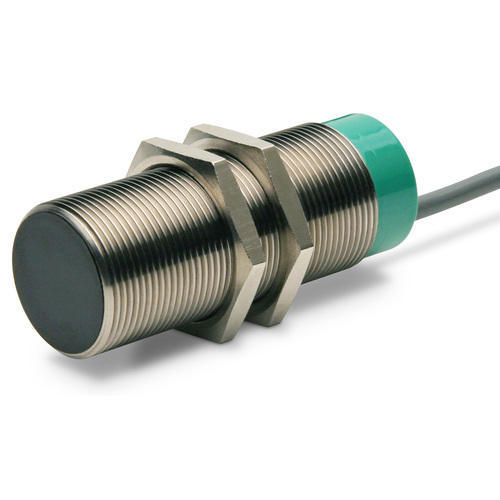
Harnessing 5G and V2X Technology for Smart Freight Highways
The logistics industry has seen some huge changes globally over the last few years. More countries have shifted their focus towards creating a connected supply chain that has transformed freight highways with smart technology integration. It has allowed roads to improve their infrastructure, as vehicles can now communicate in real-time with the use of 5G and V2X communication.
Freight operators can move beyond simple tracking to achieve predictive logistics. This integration allows for immediate decision-making, enabling innovations like automated truck platooning, dynamic route optimisation based on real-time traffic data and continuous remote diagnostics. This can boost efficiency, safety and sustainability across the entire supply chain.
This guide will give you insight into how 5G and V2X technology has improved freight highways for motorists. Continue reading to find out more.
5G’s Connectivity
Low Latency
Ultra-low latency allows data transmission delays reduced to the realm of a few milliseconds and is arguably the most critical feature 5G brings to the future of freight transport. This instantaneous communication capability moves network performance from being merely fast to being safety-critical. In the context of autonomous vehicle platooning, for instance, latency is the time it takes for a braking signal from the lead truck to reach the following vehicles. With this, the following trucks can react nearly simultaneously with the leader, allowing them to travel closer. This helps with maximizing fuel savings and highway capacity.
Large Capacity
5G has a much bigger capacity than its predecessors, as the network can handle exponentially more connected devices at the same time. This is revolutionary for motorists, especially those who work in the freight industry and have to drive up and down busy highways everyday. It can help to support a large volume of data streamed by thousands of trucks, roadside units and traffic cameras, so everyone will have a much better connection.
Unlike older networks that struggle when hundreds of users try to stream video simultaneously, 5G can reliably manage millions of connections per square kilometre. This dependable high-density connectivity is critical for ensuring that all data packets required for safety and efficiency are delivered without fail allowing real-time collaboration between vehicles and infrastructure essential for optimal freight movement.
High Bandwidth
With higher bandwidth, 5G connection enables the transfer of large data packets, such as high-definition mapping updates. This can give those working on freight highways while driving trucks can transfer large data packets, so they can use high-definition mapping updates and real-time diagnostic reports. This allows immediate redirecting if routes become clogged with traffic and the delivery is going to take longer.
This also means high-resolution video from roadside cameras or drones providing drivers with live visibility into conditions ahead allowing them to anticipate and bypass accidents, lane closures or construction zones before they become delays. This constant flow of rich data is essential for enabling complex real-time decision-making.
V2X Communication
Vehicle to Vehicle (V2V)
While driving on highways as a freight truck driver, you can use V2X communication to exchange information with other drivers regarding speed, braking and steering. This can significantly reduce the risk of accidents occurring on freight highways. This is the core technology behind platooning, which is the practice of chaining two or more trucks together electronically.
Vehicle to Infrastructure (V2I)
V2I enables communication between trucks and roadside units (RSUs), traffic lights and smart signs. This facilitates dynamic traffic signal prioritisation for heavy freight and provides real-time alerts on road closures, accidents or weather conditions. This can help truck drivers not accidentally take a route that has any of these issues, which can cause major issues in the supply chain and affect job performance of truck drivers.
Vehicle to Network (V2N)
V2N communication leverages the high speed and capacity of 5G to connect the moving truck directly to cloud-based services. This capability is essential because it allows the vehicle to function as a fully integrated, data-generating node within the wider logistics network. Data streams like engine diagnostics and real-time location are continuously uploaded to Fleet Management Systems (FMS). This is perfect for performing dynamic route optimisation.
Creating the Smart Freight Ecosystem
Automated Platooning
The most significant immediate benefit for freight is that platooning can now become automated. V2V communication, supported by 5G’s low latency, allows a convoy of trucks to travel extremely close together with less risk of potential collision or accidents. The lead truck controls the speed and braking with the following trucks mirroring its actions. This reduces aerodynamic drag, leading to significant fuel and cost savings that can be very high when driving freight trucks across the country on a continuous basis.
Dynamic Route Optimisation
Fleet management systems, connected via 5G, ingest V2I data like information about congestion, construction, weather in real-time. This allows for instant re-routing decisions to minimise delays and fuel consumption, moving beyond static GPS data to a more dynamic planning system that improved the process of transporting large goods across the country, such as bamboo panels or concrete slabs.
Enhanced Safety and Predictive Maintenance
V2I communication can deliver alerts on hazardous road conditions, such as icy patches reported by other vehicles. This can be very effective for route replanning or knowing your capabilities of driving for a given day. At the same time, the 5G connection enables continuous streaming of vehicle diagnostics, allowing agencies to perform predictive maintenance and address equipment failures before they lead to roadside breakdowns or accidents.
The Freight Benefits of 5G and V2X
After completing transport training, truck drivers need to regularly drive on highways. With the incorporation of 5G and V2X communication systems, driving on these roads has become easier and results in less harm to drivers. Some of these benefits include:
- Operational Efficiency: Drivers can get up to 15% fuel savings from platooning, as well as reduced congestion and travel times.
- Safety: Minimised human error through partial automation, hazard alerts and safer platoon following distances.
- Sustainability: Lower fuel consumption can reduce CO2 transmissions per tonne-mile, which is better for the environment.
- Cost Reduction: Lower labour costs, decreased maintenance costs and lower insurance can be achieved with this technology.
Conclusion
The integration of 5G and V2X technologies gives truck drivers massive data capacity and seamless vehicle-to-everything communication. This technology ensures that safety-critical applications like automated platooning and instantaneous remote control are reliable, while large-scale data transfer improves real-time decision-making.
V2X communication can result in up to 15% fuel savings, less human error and a significant decrease in operational costs, which can be great for goods transportation business success. The adoption of these technologies transforms the trucking industry, moving it from a cost-intensive to one that is more efficient and sustainable.


